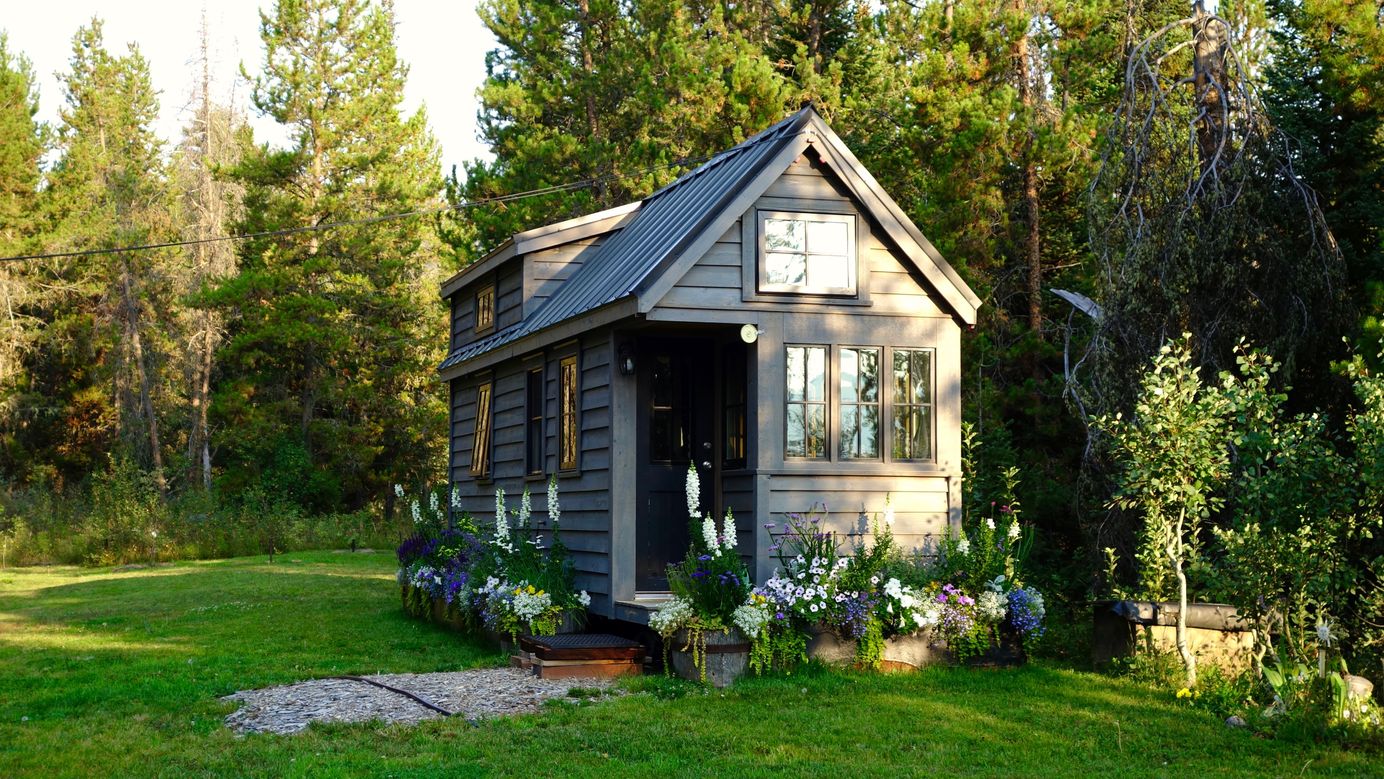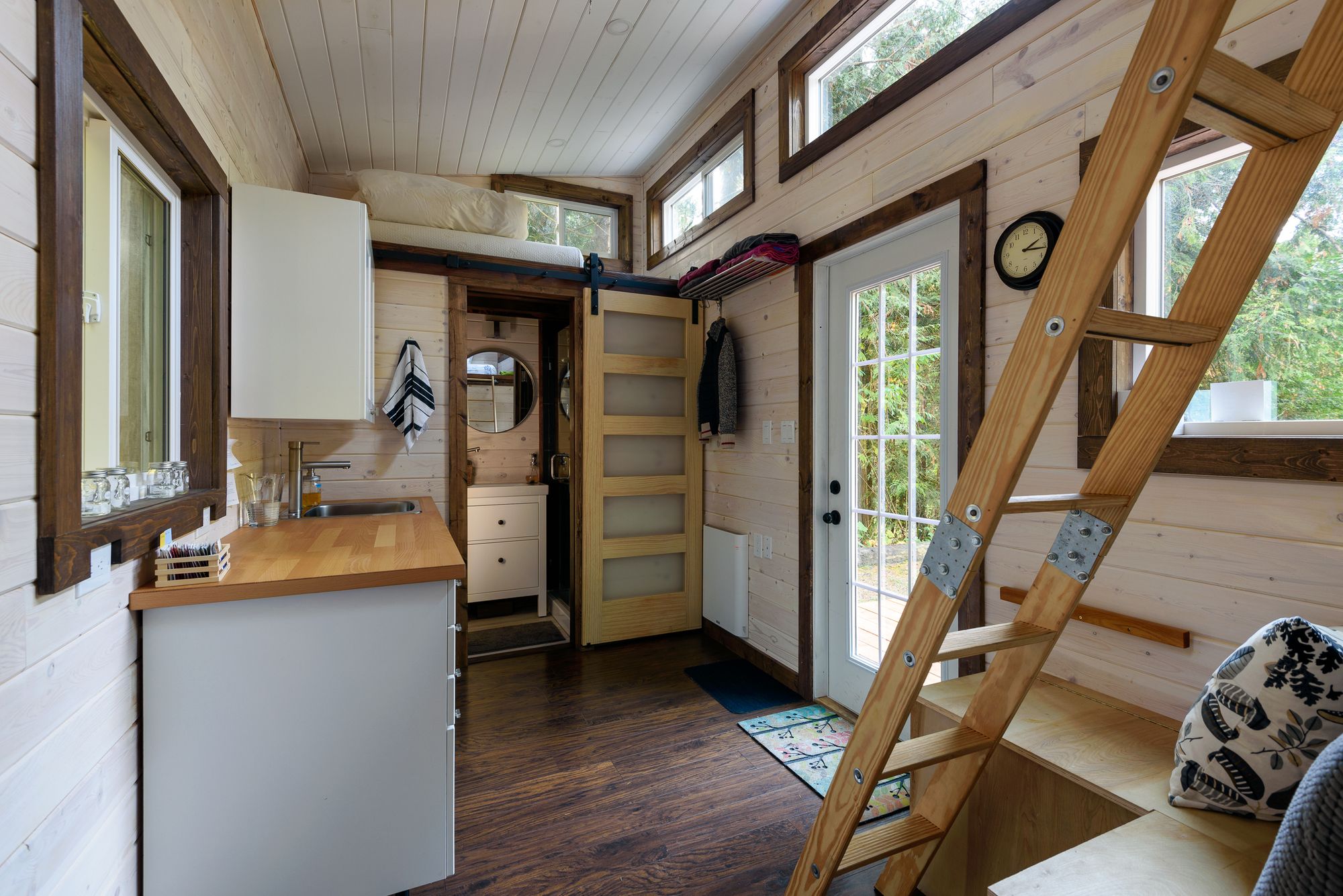
Tiny Houses: 5 Secrets These Homeowners Won't Tell You
Tiny houses may seem like a romantic tribute to freedom and minimalism, but they come with some unexpected complications.
There are many reasons to consider downsizing and adopting a minimalist lifestyle, but is living in a tiny home all it’s cracked up to be?
What Is a Tiny House?
A tiny house is just what it sounds like. Houses will fall into this category if they are less than 400 square feet. Often, tiny houses are built onto trailer beds for increased mobility and greater flexibility.
Despite the novelty, tiny houses are not all that rare; there is an entire tiny house movement that promotes simple living in small spaces.
Reasons for Living Tiny
The tiny house movement is motivated by freedom. Rather than being chained down by possessions or hefty monthly mortgage payments, advocates of tiny living choose to engage in a minimalist lifestyle in exchange for financial freedom.
Without a mortgage or high utility bills, tiny home owners can rake in some big savings. Going tiny is also more environmentally friendly. A stronger connection with nature is a huge advantage for many tiny home owners. The smaller living space means more time is spent outdoors.
Tiny homes also allow for more flexibility. Since many houses are mobile, tiny home owners can jump into their next adventure without even leaving the comforts of home. Furthermore, since most tiny houses are built to the buyer’s exact specifications, tiny home owners have a house that meets their unique needs, preferences, and tastes.
Popularized by the HGTV shows “Tiny House Hunters” and “Tiny House, Big Living,” it’s easy to see the appeal. However, living in a tiny house does come with hidden drawbacks. Here are five secrets you won’t see on TV.
Unexpected Drawbacks
1. Zoning Laws
Let’s say you’re ready to jump in and build a tiny house. Great! Now where are you going to put it?
Even if you own a parcel of land, building a tiny house may not be straightforward. Zoning laws can be surprisingly strict for tiny houses, often specifying a minimum square footage for permanent dwellings (usually well over the tiny house cap of 400 square feet).
But wait, you might think. Tiny houses on wheels surely aren’t classified as permanent dwellings!
You’re right about that. But there’s another problem: they aren’t always classified as RVs either.
Many RV parks do not allow tiny houses because they do not meet the required specifications for an RV. The exception is if the tiny home is officially certified through the Recreation Vehicle Industry Association (RVIA). This is usually something the manufacturer obtains after extensive time and testing, and not all manufacturers are RVIA certified.
With all the restrictions for tiny homes, where is an aspiring minimalist to go?
Many tiny home owners choose to live in tiny home communities, similar to an RV park. Others choose to set up their tiny home in someone else’s yard and register it with the city as an Accessory Dwelling Unit (ADU).
It depends on your city’s zoning laws and what is permitted, but tiny home owners should plan on costs beyond building expenses: either for a monthly space rent or for purchasing the required permits.
Deciding where to put a tiny home isn’t a straightforward decision, but there are members of the tiny home community who can help. Networking with like-minded people in your area can help tiny home enthusiasts obtain more information and resources. This interactive map lets you find tiny home communities or houses for sale in your area.
2. Home Insurance
No one wants to plan for damage or destruction when they make a home purchase, but keeping an active insurance policy is a must if you want to protect your investment.
The same goes for tiny homes. Unfortunately, it’s much harder to get homeowners insurance for a tiny home than it is for a typical dwelling.
Most home insurance policies are designed for larger homes and will not accommodate homes with smaller square footage. If the tiny home is National Organization of Alternative Housing (NOAH) certified, then a manufactured home policy would be a good idea.
If the home is DIY and not certified, you may need to self-insure or go through a smaller insurance company. Take photos of the building process to prove to the insurance company that everything is up to code.
If the tiny home is mobile, RV insurance is a possibility. However, most RV insurance policies do not allow for permanent living unless you opt into a special “full-timer’s package.”
To complicate matters further, the same insurance policy may not cover your tiny home if you decide to start in one place and move to another. Policies for stationary structures and moving vehicles are different, which can be difficult if the tiny home falls into both categories. Usually, tiny home owners will need transit insurance to protect their home and possessions.

3. No Financing Available
Prospective tiny home buyers should not plan on taking out a mortgage, since few banks will offer them.
While being free of a mortgage is one of the attractions of a tiny house lifestyle, not everyone has enough cash saved up to purchase the tiny home of their dreams.
Conventional mortgage lenders usually have set minimum amounts for loans; they also only offer loans with houses on permanent foundations.
If you want a loan for a tiny house on wheels, then an RV loan is the way to go. The one caveat is the tiny house must be certified by the RVIA.
If the home is not certified or if it has a foundation, a buyer could take out an unsecured loan with higher interest rates (7%-10%). The loan would not be collateralized, but rather based on the buyer’s financial history and credit score.
Other options include a hard money lender or private lender. While terms vary depending on the lender, interest rates tend to be much higher than conventional bank loans.
4. Lack of Resale Value
One of the main advantages of real estate is appreciation. Buyers can buy a home and sell it years later at a higher price.
Compare this to buying a car or truck. It’s a depreciating asset. Even if you buy it new, it loses value as soon as you drive it off the lot.
Tiny homes fall somewhere in the middle. If they are built on land, then the land appreciates like normal real estate. However, most come on wheels and are not put in a permanent location. This means they are a depreciating asset.
Think about it this way: in real estate, land is what appreciates in value, not structure or dwellings. These will still succumb to the test of time and fall into disrepair. Upgrades can add value to a home, but ultimately, the location is what is going to drive the base price.
If a tiny home does not have a fixed location, then the resale value is only as good as the quality of the house itself. It’s not uncommon to hear of tiny home owners losing money when they sell.
While this may be discouraging for those wishing to invest in tiny homes, it does not tell the entire story. By living without a mortgage or monthly rent payments, some tiny home owners manage to either break even or come out ahead in just a few years.
For example, say a one bedroom apartment cost $1,000 to rent, and monthly mortgage payments would be around the same price. By purchasing a tiny home in cash for $60,000, tiny home owners would break even on housing prices within five years. Depending on your goals, you could look at downsizing to a tiny house as an experiment. However, just don’t expect a huge return on your investment.
Lastly, since tiny living is a relatively recent phenomenon, there is not a lot of data about depreciation rates in tiny houses and whether this movement is a growing trend or a passing fad. This article examines tiny house depreciation in more depth.
5. It’s a Lifestyle Change
Most people know this going in, but many are still surprised at the lifestyle adjustment required to thrive in a tiny environment.
The space restrictions are felt in more ways in one. Tiny living is not always ideal for a growing family. It’s hard to spend time away from other tiny home residents unless you go outside. There’s also less space to entertain guests or visiting family members.
Daily logistics also complicate matters. Cooking takes up a lot of space and it can be difficult for more than one person to maneuver around the kitchen. Smells (both good and bad) travel faster and can be overpowering in a small space. Hanging out laundry or starting a project can easily take over the house. And while it seems like less space to clean would be a good thing, many tiny home owners report that their space gets a lot messier faster. They say they end up cleaning just as often as when they lived in a standard-sized house!
There are also storage considerations. Not having enough closet or shelf space means paring down on clothing, books, and valuable keepsakes. This can be challenging for some people. Some tiny home owners choose to rent a storage unit, which adds to monthly costs.
Final Word
Tiny homes are a fascinating trend focused on minimalism and financial freedom. They offer a more cost-effective path to homeownership for those who do not want to be tied down to a traditional mortgage. However, the romanticized view we see on TV does not tell the entire story.
If you’re thinking of building a tiny house, understanding your local zoning laws will help you determine where to put it. Being able to certify it through the Recreation Vehicle Industry Association (RVIA) means you have more options for financing and home insurance, but it may limit your choice in manufacturer. Buying a tiny home may not give you a great return on your investment like a typical real estate purchase, but it could be just what you want if the price is right.
Ultimately, the decision of whether or not to go tiny depends on your goals. Tiny homes offer freedom and flexibility, but it’s important to take a hard look at the logistics before jumping in head-first.








